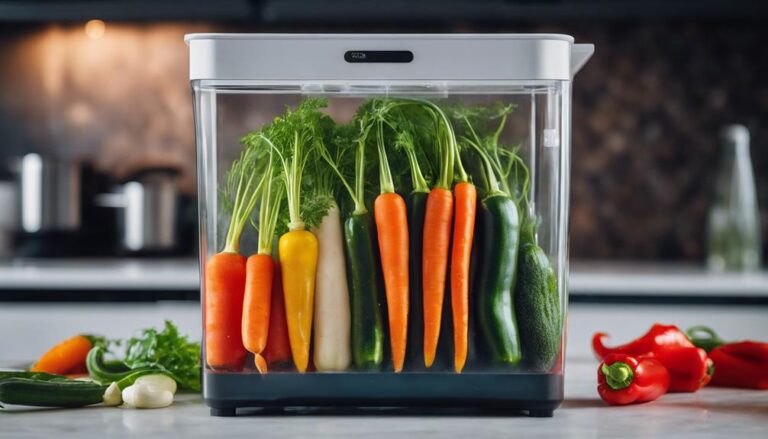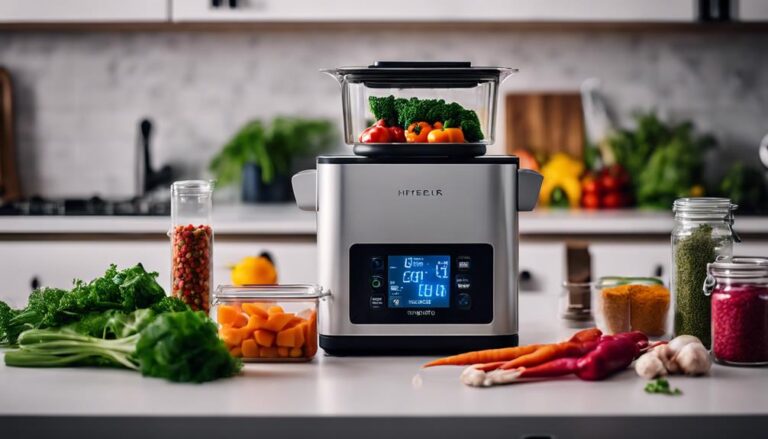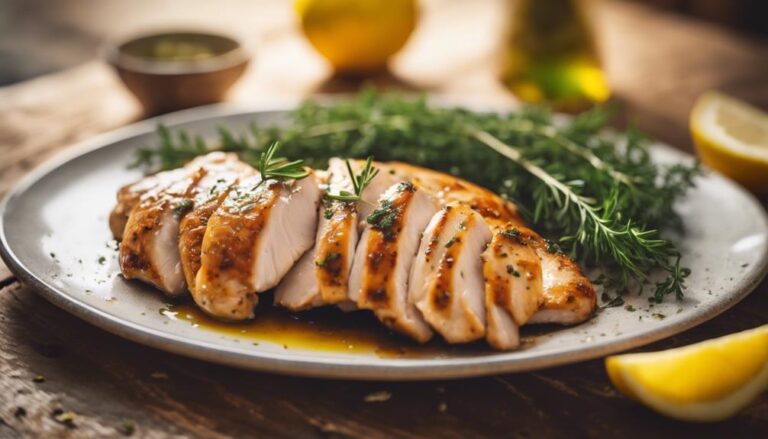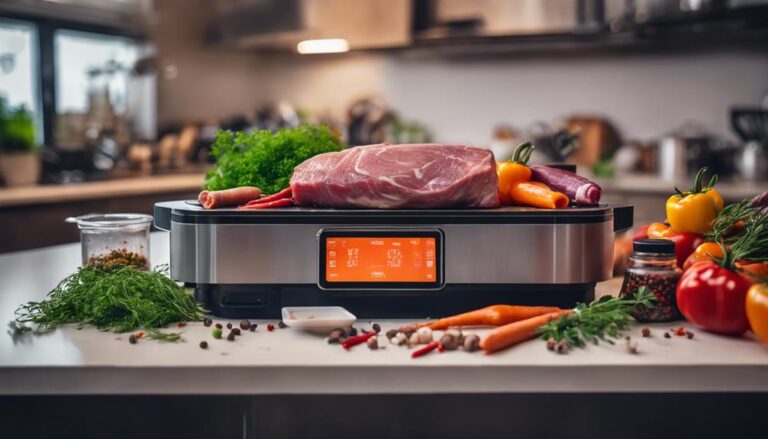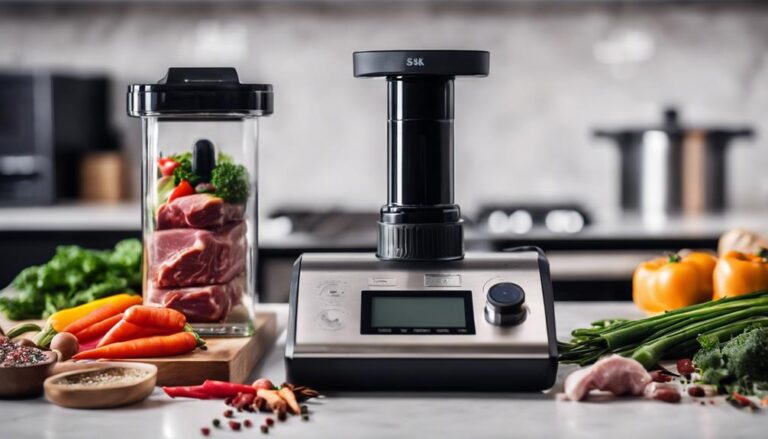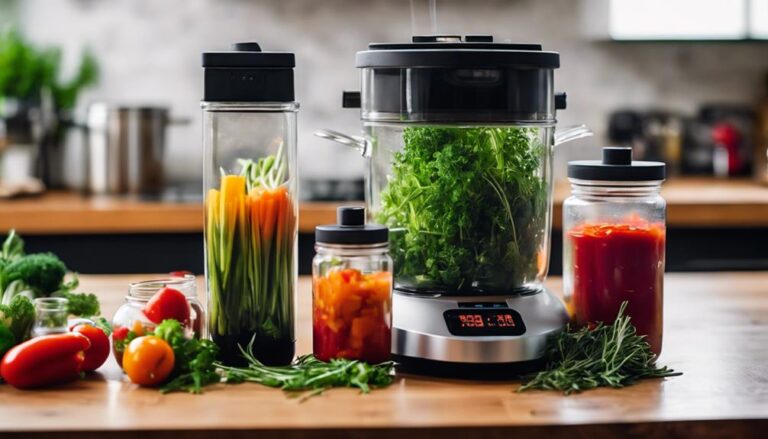How to Use Sous Vide for Healthy Meal Replacements
I use sous vide cooking to create healthy meal replacements that keep nutrients intact while minimizing flavor loss. By vacuum sealing ingredients, I lock in moisture and taste, ensuring juicy results. I select a mix of lean proteins, vegetables, and grains for balanced meals. Cooking each item at precise temperatures, like chicken at 150°F for 1-2 hours, guarantees ideal texture and doneness. After cooking, I store meals in airtight containers to keep them fresh. Reheating is easy, either in the sous vide water bath or using a microwave. There's much more to explore about making the most of sous vide cooking techniques.
What You Will Learn Here
- Plan balanced meals by selecting a variety of proteins, vegetables, and grains for nutritious replacements.
- Use flavorful marinades to enhance taste without adding extra calories.
- Cook proteins at precise temperatures to retain moisture and nutrients, ensuring optimal flavor and texture.
- Prepare multiple meals simultaneously in the sous vide water bath for efficient meal prepping.
Benefits of Sous Vide Cooking
One of the biggest benefits of sous vide cooking is that it preserves more vitamins and nutrients, making it a healthier option for meal replacements. When I use this method, I notice how much better my meals turn out.
Sous vide cooking preserves the integrity of food by cooking in a temperature-controlled water bath, which minimizes nutrient loss. This means I can enjoy healthy meals without worrying about added fats or salt.
The precise control over cooking time and temperature guarantees that everything comes out juicy and tender, enhancing flavor and texture.
I find that planning and prepping my meals with sous vide allows me to create a variety of balanced dishes, from proteins to vegetables and grains. Additionally, this method considerably reduces harmful substances like HCAs and PAHs, promoting food safety.
Essential Cooking Techniques
Mastering essential cooking techniques is crucial for making the most out of sous vide, allowing me to achieve perfectly cooked meals every time. Using a sous vide machine transforms the way I prepare healthy food, ensuring consistent results.
Here are some key techniques I rely on:
- Vacuum sealing my ingredients keeps flavors locked in and prevents water from diluting the taste.
- Seasoning with salt before cooking enhances the natural flavors of proteins like Pork Tenderloin and Chicken Breasts.
This innovative cooking method involves sealing food in a vacuum bag and immersing it in a water bath at a precise temperature, which helps to retain moisture and nutrients.
For instance, cooking chicken at 150°F for 1-2 hours keeps it juicy and tender, while pork shoulder can be cooked at 165°F for 12-18 hours for ideal flavor.
Meal Prep Strategies
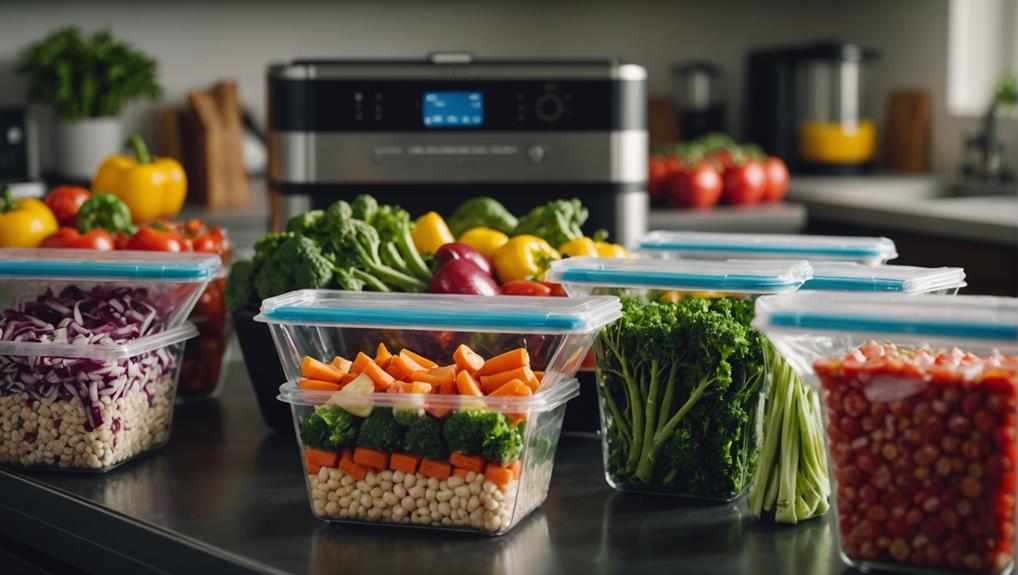
Effective meal prep strategies can transform my weekly cooking routine, making it easier to enjoy healthy, delicious meals without the hassle. By selecting a variety of proteins, vegetables, and grains, I guarantee my meals are balanced and nutrient-dense. Utilizing sous vide cooking allows me to prepare multiple proteins simultaneously, which maximizes efficiency during the week.
Here's a quick reference meal prep timeline that helps streamline the process:
| Proteins | Vegetables | Marinades |
|---|---|---|
| Chicken Breasts | Asparagus | Lemon Herb |
| Salmon Fillets | Broccoli | Teriyaki |
| Beef Steaks | Carrots | Garlic Soy |
| Pork Chops | Zucchini | Spicy Mustard |
| Tofu | Bell Peppers | Sesame Ginger |
Before vacuum sealing, I incorporate flavorful marinades to enhance taste without adding excess calories. Using sous vide cooking also helps maintain the natural texture and moisture of the ingredients, guaranteeing my meal replacements are not only healthy but also satisfying. By having a clear plan and timeline, I reduce stress and make the most out of my meal prep efforts.
Healthy Recipe Ideas
Now that I've my meal prep strategies in place, I can explore some delicious healthy recipe ideas that utilize sous vide cooking for maximum flavor and nutrition.
With sous vide, I can precisely control the temperature, ensuring that my proteins, like chicken and pork, are cooked evenly and retain their nutrients.
Here are a few innovative recipes I love:
- Lemon Herb Chicken: I marinate chicken breasts in lemon juice and fresh herbs, then sous vide them to juicy perfection. They're great sliced over salads or in wraps.
- Sous Vide Pork Tenderloin: I season lean pork tenderloin with spices and cook it sous vide. The result is tender, flavorful meat that pairs well with roasted vegetables.
These healthy meals not only taste great but also fit perfectly into my meal prep routine.
Nutritional Considerations
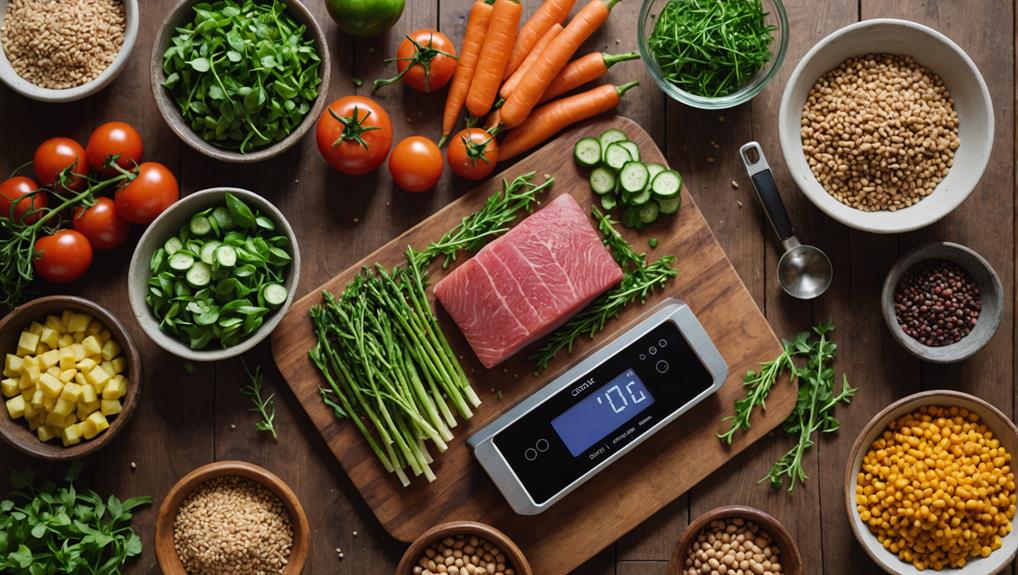
Understanding the nutritional considerations of sous vide cooking reveals how this method can enhance both the flavor and health benefits of my meals. One of the primary advantages is the way sous vide cooking retains higher nutritional value in food compared to traditional methods. This technique preserves essential vitamins and minerals, like B vitamins, magnesium, and zinc, ensuring that I get the most out of my meals.
By cooking lean proteins such as chicken breast or pork shoulder at precise temperatures, I maintain their natural juices and nutrients, making them healthier meal options. The ability to customize meals with a variety of herbs and spices allows me to enhance flavor without unnecessary sodium or unhealthy fats, supporting my heart health.
Moreover, sous vide promotes food safety by cooking in vacuum-sealed bags, which minimizes nutrient loss and prevents harmful compounds from forming. This method also aids in weight management since it encourages the use of lower-calorie ingredients.
Storage and Reheating Tips
To keep the nutritional benefits of sous vide meals intact, proper storage and reheating techniques are key. In my experience with sous vide meal prep, I always prioritize a method that preserves flavor and safety. Here's how I do it:
- Store in airtight containers: This prevents freezer burn and keeps meals fresh for up to three months.
- Label everything: I make sure to label each container with the date and contents to guarantee proper rotation and usage.
When reheating, I always check that my meals reach an internal temperature of at least 165°F (74°C) for food safety. This way, I can enjoy my delicious sous vide meals without compromising on health.
Frequently Asked Questions
Is Sous Vide the Healthiest Way to Cook?
I believe sous vide's health advantages are remarkable. Its precise temperature control enhances nutrient retention and flavor, ensuring meal consistency while minimizing harmful substances, making it one of the healthiest cooking techniques I've tried.
What Is a Disadvantage of Sous Vide?
One disadvantage of sous vide is the lengthy cooking times. I often find the sous vide equipment pricey, and while it's versatile, the lack of browning can make the final dish less visually appealing.
What Should You Not Sous Vide?
I've learned that sous vide safety tips suggest avoiding delicate greens, high-sugar fruits, and certain seafood. Texture considerations matter, too; I focus on food compatibility to guarantee ideal flavor enhancement and nutritional retention with the right cooking times.
Is Sous Vide Worth It for Meal Prep?
I believe sous vide's worth it for meal prep. Its convenience, flavor retention, and efficiency in portion control enhance time management. Plus, easy cleanup and diverse recipe variety contribute to impressive health benefits I truly appreciate.
Conclusion
Using sous vide for meal replacements can transform your approach to healthy eating.
This method guarantees precise cooking, preserving flavors and nutrients.
By following the essential techniques and meal prep strategies outlined, I can create nutritious dishes that are easy to store and reheat.
Incorporating various recipes allows for variety in my diet while maintaining health goals.
Overall, sous vide offers an efficient way to enjoy balanced meals, making it a valuable tool in my kitchen.






